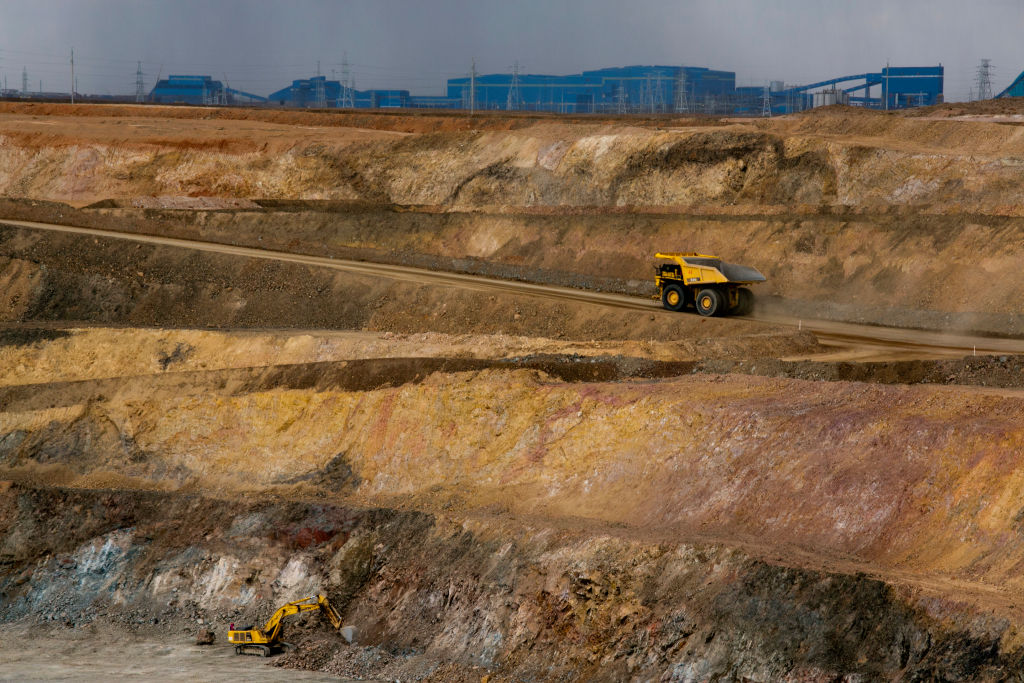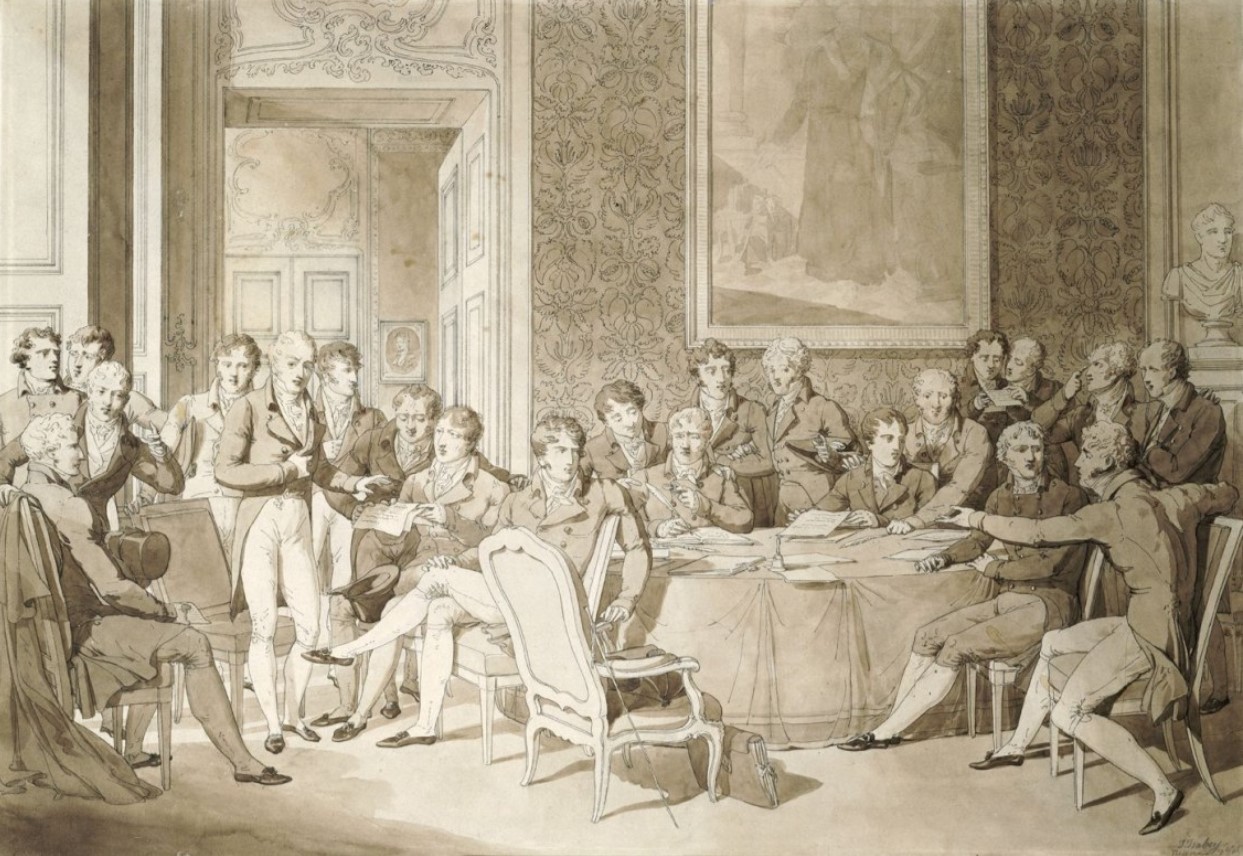
Ernest Hemingway wrote in The Sun Also Rises (1926) that bankruptcy occurs gradually and then suddenly. This should be treated as a rule of geopolitical affairs.
For centuries, political structures and hierarchies of power that once were thought to be unchanging often suddenly vanished. Demise was gradual but collapse was sudden.
The Russian Empire (abolished in September 1917) and the Soviet Russian empire (dissolved in December 1991) both exhibited permanence—until they did not. So did the Austrian-Hungarian Empire (abolished in October 1918) and the Ottoman Empire (abolished in November 1922).
Only last month we witnessed the sudden collapse of Bashar al-Assad’s Syria. Rulers in Beijing, Moscow, Tehran, Pyongyang, Havana and elsewhere nervously understand the Hemingway rule, even if they have never read him.
There is another way to express this rule. After decades when nothing happens, decades can suddenly happen in weeks (a saying that is attributed to Vladimir Lenin). While we expressed hope on New Year’s Eve for a more peaceful and less chaotic world, one senses that as 2025 unfolds we will see decades suddenly happen in a blaze of geopolitical twists, turns and transformations.
The scene is bewildering. What will happen in the Russo-Ukrainian war? Will a peace deal be reached? Will Vladimir Putin keep his grip on power? Will Israel go to war against Iran? Will Iran recover from recent setbacks or will the regime start to unravel? Will it make a dash for nuclear weapons?
Will a dramatic Middle East peace deal, and a Palestinian homeland, emerge as a result of a regional realignment involving the US, Saudi Arabia, Israel and other key players and a freezing out of Iran? Will Islamic State or al-Qaida (or both) manage to galvanise supporters into launching a new wave of terrorist attacks in the West, perhaps by mobilising Muslim anger over the plight of the Palestinians? Will the India-China border remain quiet? What is Kim Jong-un plotting? Does he sense opportunity in South Korea’s political crisis?
What will happen in the seas of the Western Pacific, especially around Japan, Taiwan and The Philippines? Or in the next phase of US-China strategic competition? What of China’s calculations about its objectives and timelines, especially given the return of Donald Trump to the White House? Will China’s economic and social fragility combine with internal political tensions to shake Xi Jinping’s hold on power? Will Trump’s second term dramatically transform the role of the US in the world?
In the grey space between peace and war, will we see an acceleration of cyber attacks, sabotage (including against undersea infrastructure), covert disinformation and propaganda campaigns, and other forms of intimidation by Russia and China against the democracies of the West, in a bid to throw them off balance, to fracture their social cohesion and undermine the national confidence of their populations? At the other end of the spectrum, will nuclear weapons be used for the first time since 1945?
On some of these issues, there will be still months and years to play out. Some, however, will play out within weeks.
As Henry Kissinger often said, in the face of a wide range of uncertainties and imponderables, often action has to be taken when the opportunities and threats are only incompletely glimpsed, and when the probabilities and consequences cannot be calculated precisely. If we wait for time to play out, we are likely to be surprised when things happen suddenly.
As Australia grapples with this bewildering range of contingencies, it will need to focus its efforts on that which matters most. For Australia, the gradual and then sudden establishment of Chinese hegemony and a US strategic withdrawal from our region (whether by choice or through military defeat) would be the most adverse geopolitical occurrence in our history.
Everything else listed above matters. This would matter most. A hegemonic China, technologically dominant and militarily unchecked, with the US looking on from its hemispheric citadel, would be for Australia a more demanding overlord than Imperial Germany, Nazi Germany, Imperial Japan or Soviet Russia would have been had any one of them managed to achieve mastery in Eurasia. A dominant China would expect to get its way, and resisting would incur high costs.
Australian policy must be constantly directed to the challenge of working with others to prevent such an outcome.
In part, this will mean intensifying and accelerating our military, civil defence and national cyber defence preparations.
In the months and years ahead, there is a significant chance of a US-China military crisis in Asia, similar to the Cuban missile crisis of 1962.
If China continues to pursue a course of preparing for a blockade of Taiwan, the odds of this are likely to be at least 50 per cent. In the worst possible case, war might break out, gradually in the grey space between peace and war, and then suddenly with weapons being launched with little or no warning. The odds of this occurring between now and 2030 are likely to be about 10 to 20 per cent.
Aside from intensifying preparations for such eventualities, the other arm of policy that needs to be mobilised is our regional diplomacy. Australia last faced such dire prospects in the 1930s. In the face of the growing menace of Imperial Japan, it chose not to re-arm in time and as a result was defenceless in 1941, when John Curtin was forced to ‘look to America’. Neither did Australia act confidently and effectively enough in terms of its statecraft, even though it was more seized than was the British government of the growing threat posed by Imperial Japan.

We can learn the lessons of the ’30s. In the 90 years that have since passed, we have built a deep store of regional connections and we go to the region as a different Australia, independent and confident. We should engage with our neighbours on the need to stand together against Chinese coercion and aggression.
In doing so, we would not be seeking security from Asia but seeking it in Asia.
Our neighbours are highly attuned to geopolitical realities. Almost without exception, even if they do not say it, they are not keen to see China emerge as a hegemon. Equally, they would prefer to see the US remain engaged in the region, knowing that any regional power arrangement that had China at its head would be a vehicle for China to dominate.
However, most are not ready to tackle directly the question of China’s aggression and coercion. They see no need to do so—not perhaps until Chinese naval and coastguard vessels appear off their shores to assert Chinese sovereignty in disputed waters.
Short of them being directly threatened, attempts to enlist most of our neighbours into an anti-China coalition will not work. Here is where astute Australian foreign policy could have a significant impact. No one in the region believes that Australia is seriously trying to navigate US-China strategic competition. That it is trying not to choose a side.
Most believe Australia has already made its choice without being vocal about it. Australia’s presumed choice can be seen in our longstanding alliance with the US; the hosting of US strategic facilities in Australia; the basing arrangements that have been put in place for US military operations from Australia; Australia’s plan under AUKUS to acquire long-range nuclear-propelled attack submarines; and our participation in the growing US-led system of regional deterrence to counter China. While we have stabilised relations with China in recent years, our neighbours believe we are still working to thwart China’s rise as regional hegemon.
That certainty regarding Australian policy is credit in the strategic bank. We should leverage that credit. Instead of sliding and hedging, our message in the capitals of Asia and the Pacific should be a confident one of strategic solidarity. We should declare that we will stand with our neighbours in the face of Chinese aggression and coercion. This Australian pledge of solidarity should be extended to the following: Indonesia, Malaysia, The Philippines, Singapore, Thailand, Vietnam, Laos, Cambodia and Brunei in Southeast Asia; farther afield to Japan, South Korea, India, Sri Lanka, Maldives, New Zealand and East Timor; the sovereign nations of the Pacific Islands Forum; and possibly others in the Indo-Pacific region. In a carefully couched and suitably adapted form that recognised current Australian policy on its status, the pledge even could be extended to Taiwan.
We would not ask any regional partner to take sides in US-China great power competition or in an anti-China coalition. Neither would the pledge involve or require the agreeing of a military alliance with Australia, although in some cases that might be considered as well and especially so in the case of Indonesia.
Specifically, Australia would pledge that were Chinese grey-zone aggression and coercion to occur in relation to the territorial integrity or national sovereignty of a neighbour, we would consult immediately with them on the best ways in which assistance might be provided by Australia in terms of diplomatic, economic, technical, intelligence and material support. Subject to there being in place a military alliance between our nations, this could involve defence assistance.
Australia would be pledging to deploy all elements of power to assist its neighbours.
In making this pledge, and by not taking the easy road of cowering in our sheltered land, relieved that the dragon was breathing fire on someone else, Australia would be undertaking its most significant independent strategic initiative in the region. The pledge would remove from the table the possibility that Australia might sit back and calculate the advantages for itself in silently acquiescing in, or even tacitly condoning, Chinese aggression and coercion against our neighbours.
The pledge would commit us to doing no more than a resolute and confident Australia would be likely to do in our own interests in the applicable circumstances. By making an explicit declaration now, before the eruption of a sudden crisis, Australia would be signalling that it was serious about contributing to collective security and resilience in the region, and that it was prepared to forgo hedging and ambiguity. With those neighbours that desired it, discreet planning could take place that would save time in a crisis.
Were others in the region to make similar and hopefully mutual pledges to their neighbours, Beijing’s calculations would become vastly more complicated. This would not be an act of altruism on Australia’s part. A more resilient region that was better able to withstand Chinese aggression and coercion, preferably through a web of mutual pledges of solidarity, would make for a more secure Australia.
Australia has long had a strong Asia consciousness. For instance, in 1934 the government of prime minister Joseph Lyons dispatched the first ministerial goodwill diplomatic tour of China, Japan, the Netherlands East Indies, French Indochina, Malaya, Hong Kong and The Philippines. It did not yield useful results, for reasons already mentioned, but it showed that we were at least willing to act on identifiably Australian interests in the region.
After World War II, a more distinctively Australian approach to the region began to be fashioned. By the ’90s, the Keating government was speaking of Australia finding security in Asia.
Building on this tradition of engagement, we should now make starkly clear that, amid all the flux, we are deeply committed to a free and open Indo-Pacific, where all nations are free to make their choices within rules that everyone has agreed. The Australian pledge as described here would give force to this commitment.
In today’s chaotic geopolitical world, the actions that we take now will echo for decades to come.
Hemingway wrote of bankruptcy. In our region we are strategically solvent after decades of engagement. Will we use our credit to help to build a more secure region, even as events unfold at a dizzying pace?












